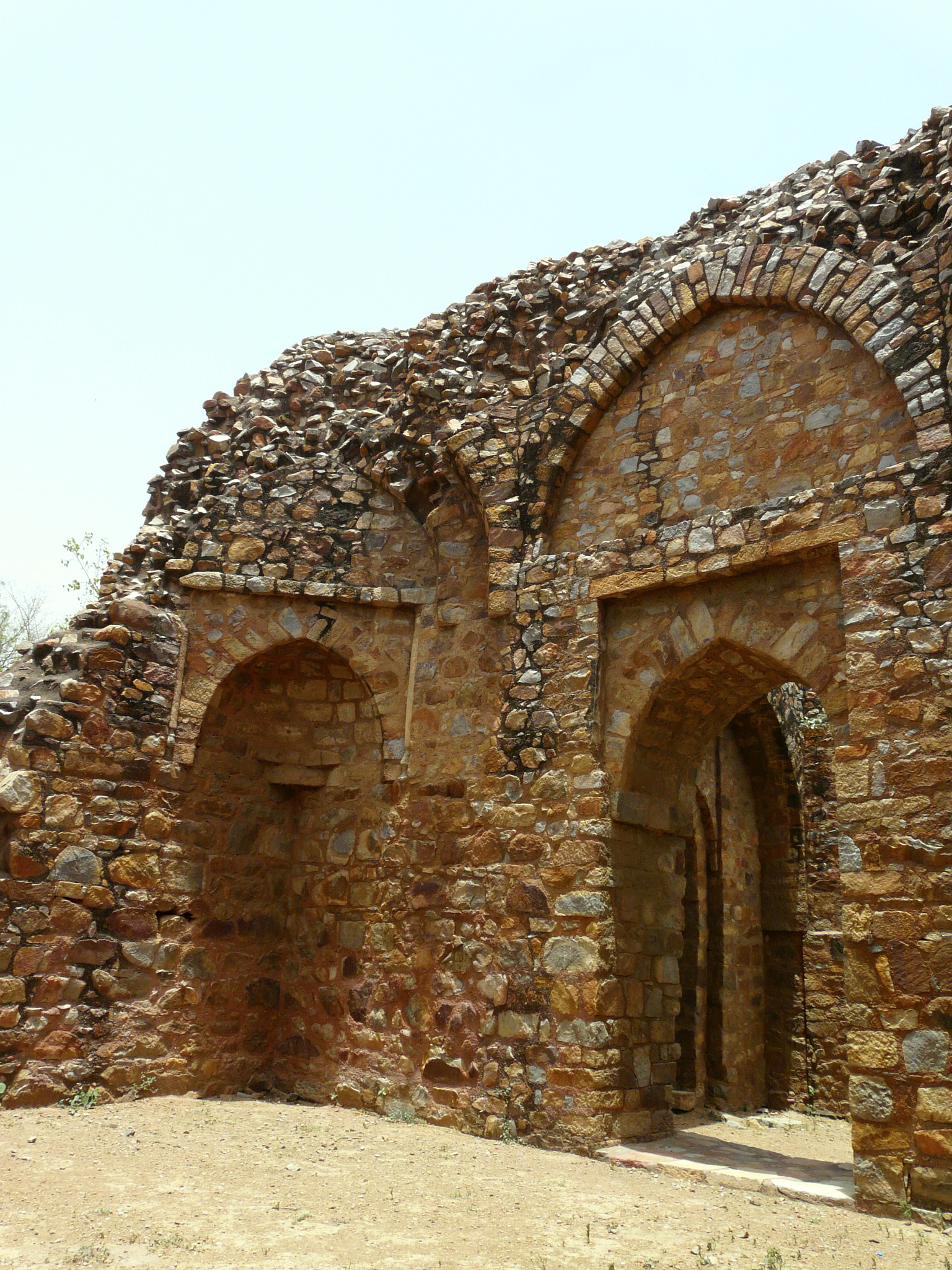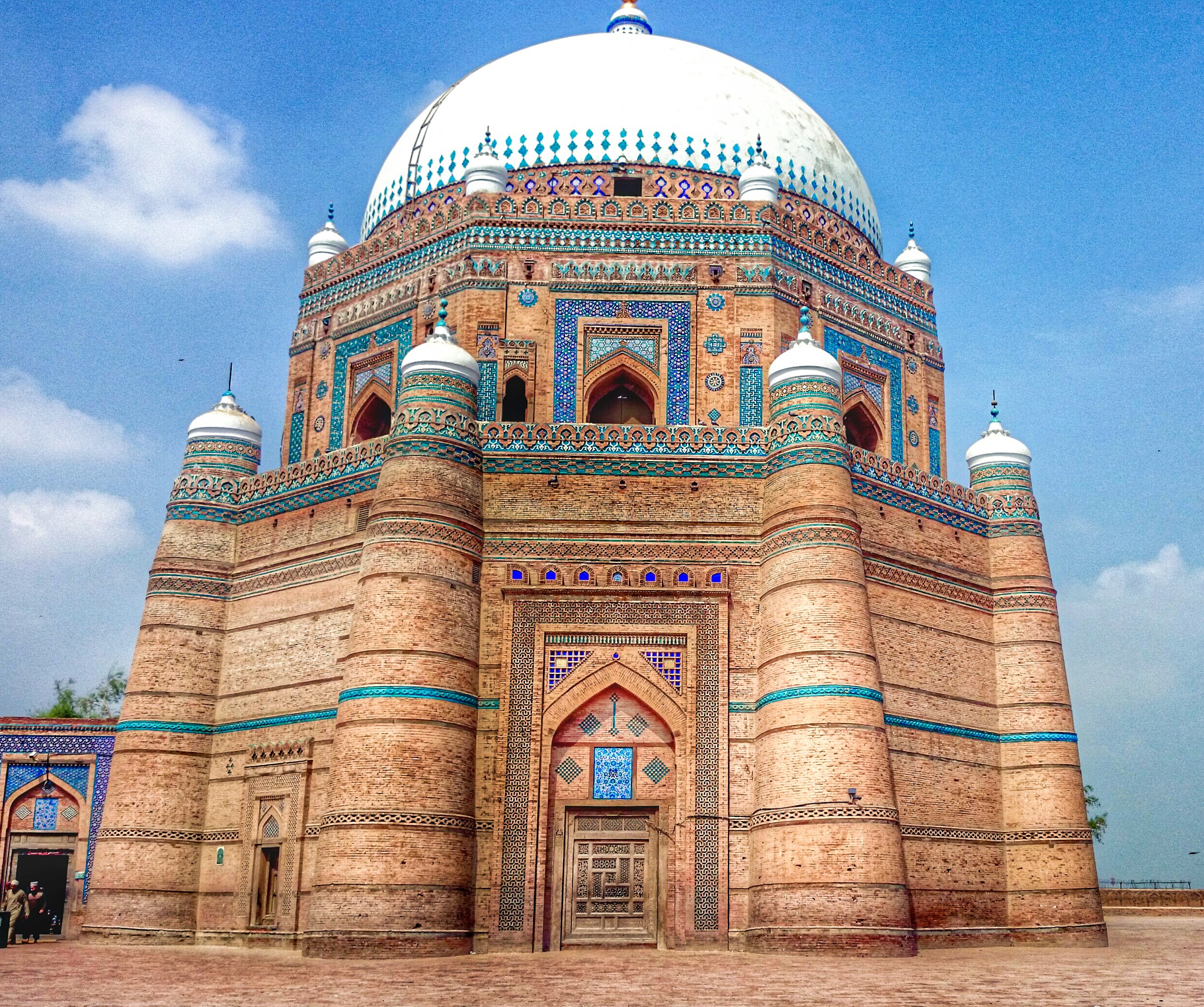Medieval India saw the establishment of Turkish Law in Delhi, which further brought their style of architecture to India. The establishment of Turkish rule in India marked the beginning of a new phase in the history of Indian art & architecture because Turks brought the Islamic style of architecture with them. This style was significantly different from the traditional Indian architectural style.
Under the patronage of Turko-Afghan & Mughal ruler’s large number of monuments was built in India. These monuments were both religious as well as secular. Mosque and Tomb were examples of religious monuments. Palaces, forts, Sarai/Rest house – public and ponds (Hauz Khas/Hauz) were the example of secular monuments.
Stone was the most common material used in construction activities during the medieval age. Most of the monuments of medieval age are an example of court art.
Essential Elements of Medieval Indian Architecture

Medieval Indian architecture was mostly Islamic and Turkish in nature. Islamic architecture was characterized by the use of arch, domes & minarets. The arch was used in the construction of doors, windows. Dome was used in the construction of the roof. Minarets were constructed in four corners of the building. At times these minarets used by Ulemas (Islamic priest) to give the call for religious gathering. Normally these minarets were built only for ornamentation purposes.
This Islamic architecture is also known as the “Arcuate style” of architecture. The traditional Indian architecture, characterized by the use of columns and Beans was known as the “Trabeate style of architecture”. For ornamentation purposes, calligraphy, Arabesque & colored marble stones were used in Islamic style.
The verses of the Quran were inscribed on the wall & roof by suing a typical angular Arabic script known as “Kafi”. In Arabesque, leapers & creepers were cut on stone.
The emergence of Indo-Islamic Architecture
From the very beginning, the monuments built during the medieval age exhibited the Indian style of architecture in terms of ornamentation & various other components. This influence was the outcome of the assimilation of Indian elements with Islamic elements. Geometrical designs & floral designs were adopted from Indian style in Islamic monuments for ornamentation purposes.
From the very beginning perforated wall (Jali) was used in the Islamic monument. It was mainly used to separate from the female compartment through court because through Jali ladies can see activities going in court. These are also used for ventilation purposes. During the Mughal period Chhajja (projection), Jharokha (Balcony), Chhatri (Canopy) were adopted from Rajput architecture. Chhajja was used to prevent rainwater from entering from the windows & door as well as keep rainwater away from the wall.
Jharokha was used by the emperor for a Jharokha-i-Darshan. The emperor used to stand in the balcony every morning to show his face so that people could be sure that the emperor was alive. Chhatri was built on a wall of the fort commonly. The assimilation of Indian elements with Islamic architecture gave birth to Indo-Islamic architecture. This assimilation was the outcome of both conscious & unconscious efforts.
During the initial phase, Islamic monuments were built by converting the already existing Indian monuments because it was quite easy to convert the temple into a mosque. (Saraswati Bhojshala – converted into a mosque – still image of Saraswati are present on the mosque). The Turks came to India as conquers, they didn’t bring mason (craftsman) with them because of this Turks had to employ – Indian mason who were habitual in Indian style. As a result of this, some Indian features used became part of Islamic monuments unconsciously.
The Mughal ruler like Akbar was liberal & progressive, they consciously adopted several Indian elements in their monuments such as Chhajja, Jali, Jharokha, Chhatri. As a result of this, the process of assimilation of Indian Islamic monuments reached new heights.
Evolution of Indo-Islamic Architecture

In the early monuments, a Corbelled arch was used. Balban’s tomb was 1st monument having a “true arch”. Early monuments were constructed by using the material from existing Indian monuments. For the 1st time during the Khilji period monuments were constructed on fresh material. Jamat-i-Kahan mosque built by Allah-ud-din Khilji was 1st monument constructed by using material specially queried for the purpose.
During the Khilji period, the bricks being to be placed as headers & stretchers in the wall. This improved stability & strength of the building. The use of white marble increased with time. For the 1st time, white marble was used in the upper panels of Qutub Minar. In Alai Darwaja built by Ala-ud-din Khilji white marble was used on a larger scale. In Humayun’s tomb (Delhi), for the 1st time, the white marble was used on large scale (Biggest Mughal Graveyard).
Taj Mahal was built entirely in white marble. Quadrangular (4 sides) design was used in the early monument of the medieval age. For the 1st time pentagonal (5 sided) design was used in the tomb of Giyas-ud-din Tughlaq (tughalaqabad fort Delhi). Tomb of Khan-i-Jahan Telangana was the 1st building having an octagonal design. Sultan Giyas-ud-din Tughlaq initiated several changes in architecture. During his reign monument was built on a raised platform to enhance the monumentality (to make the monument bigger). The white marble is used on a larger scale in the construction of the dome to enhance beauty.
During the reign of Firoz Shah Tughlaq a combination of an arch, lintel and beam was used in the construction of the monument. Sloping walls known as “Salami” (Ramp) were also used to the construction monuments. During the Lodhi period, a double dome was built for 1st the time. Its 1st use can be seen in the tomb of sultan Sikandar Lodhi (Delhi).
The double dome became a common feature of the monument during the Mughal period. The finest of the double dome can be seen in the Taj Mahal. These domes were built by Ismail Khan Rumi of Constantinople. The construction of the double dome brought many benefits such as Babar brought the “Charbag” style of architecture to India. This style, monument was built in the middle of the park. Flowing water was used to enhance beauty.
During the reign of Shahjahan, the Charbag style was modified to some extent. The monument was shifted to one side of the park. The monument was constructed on a raised platform to enhance beauty. The monument appears bigger Taj Mahal is the finest example. During the reign of the Pietra Dura technique of ornamentation begun to be used. In this technology, the design was carved on a marble surface, then this carving filled with precious & semi-precious stone. For 1st time this technology of ornamentation was used in the tomb of Itimad-ud-daula (Agra). Pita dura in the highest form could be seen in the Taj Mahal.
Indo-British Architecture
This style of architecture emerged in India in the 19th century during the period of British rule. It combined the elements of Mughal architecture and modern. It’s known as the Indo-Saracenic style because the essential elements of Mughal architecture like arches, dome, and minarets emerged for 1st time in Syria during the 3rd to 7th century (pre-Islamic Syria).
These architectural elements were adopted by Persians & Turks in Asia. This moves to Europe as well (European Gothic style). In Indo-Saracenic style of architecture, along with the use of arches, domes, minarets, volute roof, arcade (pillared corridor), spire (conical part over tower), turret (tower), Tracery (carving on stone) was used.
The monument of Indo-Saracenic styles was built by using advanced European civil engineering technology. Such as poured concrete, iron, and steel in construction. Indo-Saracenic style of architecture manifested itself primarily in the construction of the public buildings such as the railway station, legislative assembly hall, court building, museum & commemorative structure such as the gateway of India & India Gate. Chepauk palace (Chennai) designed by Paul Benefield is the cathedral to be 1st monument of India-Saracens style.

